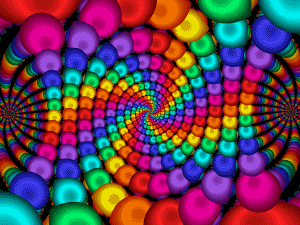The first rule of design work in relation to fonts is to make sure that only a maximum of two fonts are used. This is because more than two fonts will make the ancillary products look unprofessional. Two many different fonts may also contradict each other a distract the audience from the important features of the digipak. The fonts must also complement each other so that it doesn't look mis-matched, and in terms of my dubstep genre, I hope to use fonts that look either like graffiti or electronic/digital. The sizing of the fonts also matter, for example the following of the convention of a larger font size for the artist's name and smaller font size for the album name. Fonts should also never be used purely because they look"pretty".
2) DON'T!
The use of unnecessary effects may lead to the ancillary products looking nothing like the original concept. For example, a picture with a "plastic wrap" filter on it may end up looking distorted and disproportionate, when it was originally supposed to be a soft image of the artist's face for the cover of a romance CD. In my case, overuse of a filter may lead to the iconic image I choose looking distorted because of the different colours in the graffiti. When using an effect, it must suit the genre.
3) DO!
I have already been focusing on the rule of sticking to three
colours as a maximum. This is why my blog on my short list of colours and images only feature three colour choices each to accompany the pictures. minimising the amount of colours means that they are most likely to go together well, and a more focused approach means it will also most likely fit the genre correctly as well as the colours in the
photos.
4) DON'T!
Another "DON'T" is the stretching of images to fit the panel of the digipak template. This is because, stretched images can look distorted and unnatural. It can also be easily identified as a stretched image. If an image needs to be made bigger, then the size should be changed and any areas the are not needed should be erased. Images that are stretched reduce the amount of marks that can be allocated to the ancillary products.
5) DO!
Using clear photos that are in focus are essential, because they make sure the digipak looks professional and shows that you took the time to photograph the artist for the ancillary work. Also, on this subject, text should never be placed on or across the artist's face, and the rule of thirds should e followed to aid composition.
6) DON'T!
Pictures on every
panel are distracting and make the digipak look as though there was no specific concept. To avoid this, I have carried out research to follow the conventions of the dubstep genre closely, as too many photos in order to fill up space will
lose marks.
7) DO!
The media products should include:
- Barcode
- Date
- Copyright information
- Title of the album
- Artist name
- Record company logo
- Website
- Artist website.
for authenticity.



.jpg)

No comments:
Post a Comment